Explosion! The Legacy of Jackson Pollock was the title of a recent exhibition at the Joan Miró Foundation. What was it that exploded? Painting. Right through the roof. The exhibition allowed us to see one of the ‘evolutions’ of pictorial art in the twentieth century, in terms of Ovidian metamorphoses: changes in gestures and concepts. Pollock slid his brushes or allowed the paint to drip to the rhythm of jazz and bebop. Shozo Shimamoto fired it from canons and hurled bottles of it against his canvases. For Niki de Saint Phalle, shooting the canvas was like shooting all men… Through these and many other artists, painting became increasingly spatial as its boundaries were pushed back, so that hands, hair, and the skin of the entire body became a paintbrush; and any wall or any floor, surfaces of any kind, suddenly became a canvas. Yves Klein painted with fire. Akira Kanayama, in 1957, allowed a toy car to paint for him. And then there was Body Art, Land Art, the rereading of Artaud and Duchamp – visual art transformed into actions, happenings, performances, concepts.
And into books. Because many artists have maintained an ongoing relationship with the book-as-object, such as Isidoro Valcárcel Medina, who, from El libro transparente (1970) to 2000 d. de J.C. (1995-2000), La celosía (1972) – which was a literal transcription in the form of film of the homonymous novel by Robbe-Grillet – and El diccionario de la gente (1976), has linked his practice to this age-old object. And because numerous contemporary artworks from the turn of this century use the novelistic form as a vehicle. The novel as a platform of convergence of genres and languages. These artworks can be one-off books, or books that do not move through the same channels as literary books (as in the case of the artist Dora García, for example), or virtual, hypertextual books, or sculpted books, or purely oral serial novels that are recited or spoken (as in Un roman parlé (titre de travail), by Benjamin Seror). But the line that probably interests me most is the one in which the novel becomes a multiple platform for interpretation, writing, reading. In Materializar el pasado. El artista como historiador (benjaminiano) Miguel Ángel Hernández discusses an emblematic example: “In El instante de la memoria. Una novela documental (2010), Virginia Villaplana uses a textual device consisting of documents, photographs, testimonies, essays and fictions that form a ‘narrative puzzle’ that reflects on the plan to build 1,110 niches in a common grave in the cemetery in Valencia, which contains the bodies of Republicans who were killed by Francoist forces in reprisals between 1939 and 1945.” This is an example of one of the possible embodiments of the post-novel-as-explosion.
After Cubism, abstraction and Surrealism the best-known paths in the visual arts are those taken by Pollock and Duchamp. But at the same time, Picasso, Dalí, Tàpies, Hopper, Freud and Barceló were still painting or constructing paintings that mimicked or questioned the actual materiality of paintings to varying degrees. I think that this dual dimension offers us a useful parallelism with which to understand the novel of our times, given that novels have gone through a process of dematerialisation equivalent to that of contemporary art. In art, the earliest gestures were against painting, and then the attack and demolition operation expanded to include everything and everybody, without ever losing sight of Tradition. In the narrative field, the first attacks were against the elements that constitute the interior of the novel (time, space, the plot or characters, torn apart by Pirandello, by Musil, by Beckett and many others) and gradually attacked its fictionality, its textual condition, its materiality, its literary patent. The novel could be said to have superseded painting as an artistic platform – because a novel can be virtually anything. Even what we call works of ‘visual art’, to give them a name.
The prefix ‘post’ deservedly raises suspicions, but we can provisionally brush these aside by extending the concept in time: by thinking of each generation or each era as a period that sees itself as subsequent to the previous one – that believes it is refuting, surpassing or simply replacing it, even while the two are still coexisting in time. Even if we think in this way after the fact. From this point of view, at least since the sixteenth century, we would always be dealing with one novel typology, and one post-novel typology, like the front and back of a single plot: Tirant lo Blanc and El Quijote, Robinson Crusoe and Tristam Shandy. Post-novels proliferated in the twentieth century under the influence of the historical avant-gardes and Modernism, which incorporate images as an expressive resource through collage (Nadja, Berlín Alexanderplatz) or even by means of the deletion of text (the graphic novels of Frans Masereel or Lynd Ward). After World War II, the total novel (The Alexandria Quartet, One Hundred Years of Solitude) would have belonged to the first group, while the anti-novel (Rayuela) and ‘non-fiction novel’ (In Cold Blood) would join the ranks of the second, which became increasingly difficult to define theoretically because it gradually came to include concepts that moved further away from prose fiction and the book format. The print novels of the eighties and nineties gradually included more and more essay and reportage, and at the same time, graphic novels took hold and television series became the new Great American Novel. Ultimately, the novel came to prevail as the grand narrative paradigm that transcended what we had classified as the ‘novel’ for the previous few centuries.
As a result of all this, at the start of this century we had two types of ‘post-novels’: on one hand, the type that inherited the tradition of the classic post-novel, of Cervantes and Sterne, of avant-garde and post-avant-garde expressions in which there is a blurring of the debate around fiction and non-fiction, and in which images and typographic games are inserted seamlessly. Works such as The Infinite Joke, The Rings of Saturn, House of Leaves, La muerte me da and HHhH. Or like Reif Laren’s The Selected Works of T. S. Spivet, which describes the adventures and travels of the protagonist in the form of a biography, illustrated with maps and comic strips, like a complex narrative artefact. On the other hand, there is the post-novel that does not necessarily take the form of a printed book, what we could call The Total Triumph of The Novel, its transformation into a platform that makes it possible to create and read an endless number of cultural and media products. Videogames, comics, TV series, film sagas, visual artworks, political and advertising campaigns, reality shows.
As a reader, I’m equally interested in all of these: the novel that could be seen as heir to Diderot, Balzac, Tolstoy or Vargas Llosa; the post-novel that works in the complementary tradition; and other narrative or conceptual works that are expressed in other artistic or commercial languages. In Teleshakespeare I focused on the energy of the TV series genre, but I used the concept of ‘quantum fiction’ to try to understand, above all, the complex relationships that develop among all those languages – through transmedia when the intention is more commercial than artistic, through quantum fiction when artistic intent prevails over commercial intent, if these differences still have any meaning, as Frédéric Martel explored in Cultura Mainstream. In this sense, the work of the visual artist and photography theorist Joan Fontcuberta, as seen in the retrospective exhibition De facto. Joan Fontcuberta, 1982-2008 (La Virreina, Barcelona, 2008) and the accompanying catalogue El libro de las maravillas, could be read in these terms of conceptual expansion. We can retrospectively read the book of Marco Polo’s travels as a novel, and we can also use the concept as the ideal framework for understanding a series of projects in which photography, photographic manipulation, objectual fakes, information technologies and texts converge in order to tell stories and to dismantle them. Stories that seem to take place in parallel universes, and that, in an exhibition or a catalogue – which are read as novels – are ultimately positioned within a single framework of conversation.
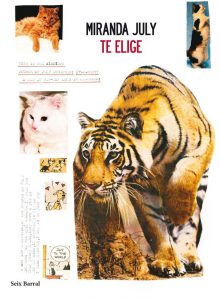 Given that, in principle, art resists taxonomy, the territory that unites and separates these two types of post-novel (the one that respects the boundaries of the literary book and the one that exceeds them) is probably the site in which some of the most significant projects of our time are being carried out. A name that springs to mind from the North American scene is Miranda July, who, in 2007, published a book of short stories that fit firmly within the classic narrative conventions of her country, No One Belongs Here More than You. At the same time, she established herself as a filmmaker and performer, before returning to the world of books four years later, but this time with It Chooses You, a volume of photographs (by Brigitte Sire) and interviews, in which literature is placed at the service of the documentary drive and subordinated to the production of a film, The Future. This means that the book was positioned in-between several channels of circulation of cultural products and of commercial and critical legitimisation, causing a series of disruptions in the usual discursive flows. The generally positive reviews in the United States describe It Chooses You as a ‘book’. On blogscritics.org it is described as “ a compelling hybrid of photobook, memoir and social observation.” On the flap of the Spanish edition we read that it was “one of the best books of the year according to Amazon, and Oprah Magazine featured it as a can’t-miss read of the month.” Its meaning expands if, after reading it, you watch the film. Miranda July’s website acts as a narrative thread that links these experiences: the performances, the film, and the ‘making-of-the-book’ interlock in a narrative continuum, in which the videos, the texts and the performances follow one another in a coherent way. It’s hardly surprising that the book launch formed part of this continuity: Partners & Spade gallery organised a sale of objects found and packaged according to the logic of It Chooses You, which were sold alongside copies of the book. In this way, the space brought together a plethora of assumptions and prejudices about what popular art is, what literature is, how artworks are legitimised, how art and money interpenetrate each other and who or what has the authority to judge their value (an online store? a television presenter? a gallery owner? an editor? an art critic? a literary critic?) Once again, it all exploded through the roof. And then it was pieced together again. But each time, the pieces fit together differently and the result is always more fascinating than what existed previously. But also more monstrous.
Given that, in principle, art resists taxonomy, the territory that unites and separates these two types of post-novel (the one that respects the boundaries of the literary book and the one that exceeds them) is probably the site in which some of the most significant projects of our time are being carried out. A name that springs to mind from the North American scene is Miranda July, who, in 2007, published a book of short stories that fit firmly within the classic narrative conventions of her country, No One Belongs Here More than You. At the same time, she established herself as a filmmaker and performer, before returning to the world of books four years later, but this time with It Chooses You, a volume of photographs (by Brigitte Sire) and interviews, in which literature is placed at the service of the documentary drive and subordinated to the production of a film, The Future. This means that the book was positioned in-between several channels of circulation of cultural products and of commercial and critical legitimisation, causing a series of disruptions in the usual discursive flows. The generally positive reviews in the United States describe It Chooses You as a ‘book’. On blogscritics.org it is described as “ a compelling hybrid of photobook, memoir and social observation.” On the flap of the Spanish edition we read that it was “one of the best books of the year according to Amazon, and Oprah Magazine featured it as a can’t-miss read of the month.” Its meaning expands if, after reading it, you watch the film. Miranda July’s website acts as a narrative thread that links these experiences: the performances, the film, and the ‘making-of-the-book’ interlock in a narrative continuum, in which the videos, the texts and the performances follow one another in a coherent way. It’s hardly surprising that the book launch formed part of this continuity: Partners & Spade gallery organised a sale of objects found and packaged according to the logic of It Chooses You, which were sold alongside copies of the book. In this way, the space brought together a plethora of assumptions and prejudices about what popular art is, what literature is, how artworks are legitimised, how art and money interpenetrate each other and who or what has the authority to judge their value (an online store? a television presenter? a gallery owner? an editor? an art critic? a literary critic?) Once again, it all exploded through the roof. And then it was pieced together again. But each time, the pieces fit together differently and the result is always more fascinating than what existed previously. But also more monstrous.
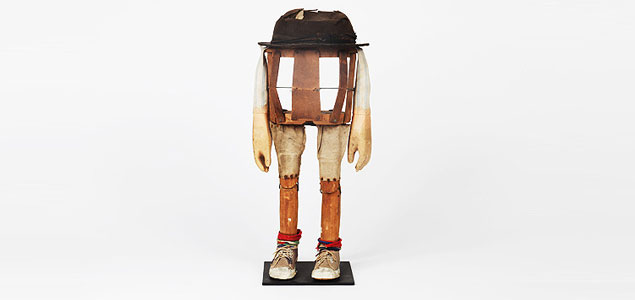


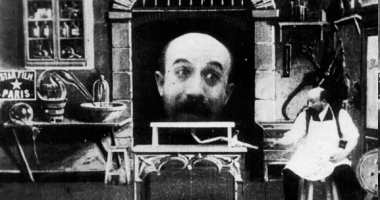

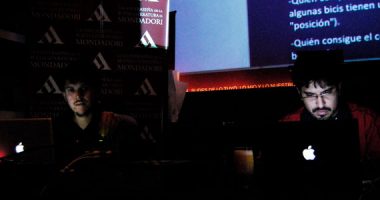
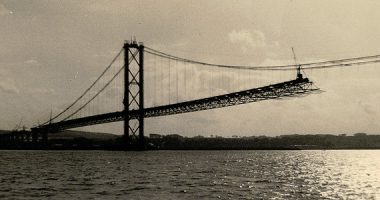
Leave a comment